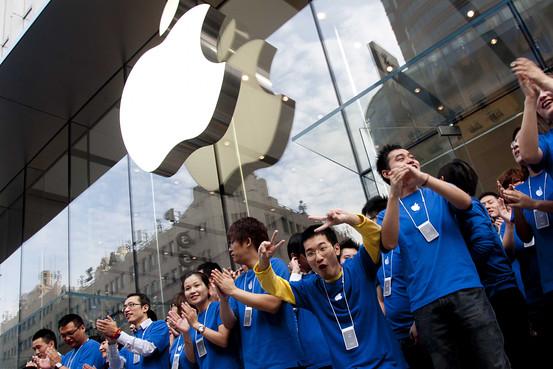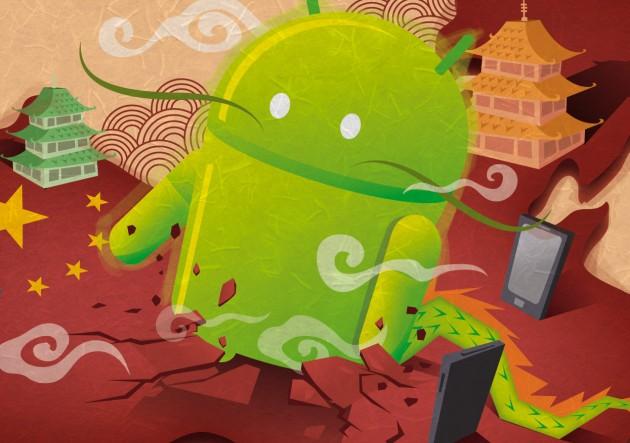

There are few bigger Apple fan boys than brands, and when it comes to effective brand strategy, Apple has been a game-changer. It can be argued that Apple single-handedly allowed mobile marketing and transformed the landscape for brand strategists. The iPhone, with its sleek design and powerful capabilities, put millions of mostly identical devices into the hands of consumers. Their willingness to shell out hundreds of dollars for a phone alone made them high-potential targets for brands implementing a robust brand strategy.
Apple’s impact goes beyond just the device – it greatly facilitated mobile platform development by addressing the issue of device fragmentation. Moreover, it provided marketers with an easy channel for distribution and monetization through the app store. In short, the iOS eco-system is a marketer’s dream coming true, showcasing the importance of integrating a comprehensive brand strategy into the ever-evolving world of mobile marketing.

Navigating the intricate market landscape of China, Apple faced challenges in establishing its presence, impacting its distribution prowess and payment integration in the App Store. Despite these hurdles, the iPhone swiftly became a coveted device for the upper-middle-class demographic, reflecting the adaptability of Apple’s brand strategy. By the early 2010s, it claimed market leadership, outshining Android in the upper-middle-class segment, while Android maintained its appeal among budget-conscious consumers. This market complexity underscores the critical role of a tailored brand strategy in effectively penetrating and thriving in diverse global markets.
At Labbrand, we consistently emphasize the strategic importance of brands focusing on Android, recognizing it as a pivotal factor in the evolution of mobile branding. As outlined in our 2010 white paper on the future of mobile branding, we foresaw Android emerging as a dominant force driving the democratization of smartphones in China. Recent developments in the Chinese smartphone market substantiate our earlier prediction, underscoring the urgency for brands to address the growing influence of Android. Navigating this transformative trend is now a critical consideration for brands, prompting a reevaluation of how to effectively engage and capitalize on the rise of Android in the ever-evolving landscape of mobile branding.
Figures alone paint a grim picture for iOS. Android’s market share in terms of sales has reached 90% (vs 4.8% for iOS devices) according to latest figures while its share of installed base stands at 72%. (vs 23.6% for iOS devices). This trend is reflected in the manufacturers’ market share ranking with Samsung sitting comfortably on top with a 17.6% market share followed by Lenovo and Yulong (aka. Coolpad) (12.3% and 12.2% respectively). Apple meanwhile is only 7th with a 4.8% market share.

In dissecting the recent market dynamics, various cyclical factors contribute to Apple’s performance, notably the prolonged absence of new products until the launch of the iPhone 5C – a more affordable alternative strategically aimed at captivating emerging market consumers. However, amidst these fluctuations, the undeniable force shaping the landscape is the swift ascent of Android. Crucially, Android is expanding its reach into the upmarket segment, offering diverse options beyond its traditional affordable alternatives. Catering to those unwilling to invest 5000 Yuans in an iPhone, Android phones have become the preferred choice for many consumers. A stroll into any Shanghai Starbucks vividly illustrates this shift, with HTC One, Samsung Galaxy (4 and Note), and Mi2 now dominating where iPhones once prevailed. This transformative trend is epitomized by Xiaomi, a local smartphone brand adopting elements from Apple’s playbook, successfully cultivating a large and fervent fan base. Xiaomi’s recent Weibo flash sale, resulting in 1.3 million reservations for a limited 50,000 devices, underscores the brand’s resonance. In a symbolic triumph during Q2 2013, Xiaomi surpassed Apple in market share, claiming 5% compared to Apple’s 4.8%. This dynamic landscape underscores the urgency for brands to recalibrate their brand strategy, adapting to the evolving preferences and market dynamics, especially within the context of Android’s burgeoning influence.

The rise of Android poses many challenges to brands. The most obvious of them is linked to app development. When developing for iOS, brands develop for one type of smartphone (the only difficulty being to manage the different screen sizes between the iPhone 4/4S and 5) which gives them much more liberty from a creative and feature point of view. They can also integrate deeply with native iOS apps such as Passbook or iCal. On the other side, the fragmentation of the Android scene means developers must ensure compatibility with dozens of types of devices, all of which have different specs and a different screen size. This makes development more complicated.

Then, distribution is also a major challenge in the Chinese Android eco-system. Most Android phones sold in China do not come with the Google Play store. Dozens of app stores such as Wandoujia, Hiapk or Xiaomi store have sprung up to fill the gap but none of them as a truly dominant position and offers the same “one stop” distribution service as the Apple app store or Google Play.

Because of these challenges (and also because many decision makers have yet to fully integrate the magnitude of the Android revolution), most brands are not giving Android the attention it deserves. iOs is still the go to platform for app development. A recent Labbrand study of the digital presence of major hotel brands in China conducted for a large international hospitality group revealed that Android apps, when they exist, suffer from poor design, bad language localization and offer experiences that are well below what is available on the iOS version.
So how can brands adapt to this new market reality and step up their Android game?
The first step is to understand what platforms clients are using. Macro figures about OS market share are not enough in China since there are major differences in digital behavior between different customer groups (based on age, geographic location, income etc…). Brands must conduct independent research to identify the iOS/Android split amongst their target audience and prioritize investment accordingly.
Then, brands should think beyond the app and invest more in their mobile websites. Not only is mobile browsing much more important in China than in the US and Europe but mobile websites offer the considerable advantage of being device agnostic in addition to being easier to access than mobile applications (since there is no need to download or install before being able to use). Here again brands should conduct research into what type of platform is preferred by customers.

If app development is deemed essential, brands must commit the required budget to create robust Android applications that transcend mere replicas of their iOS counterparts. Beyond development, the emphasis should be on impeccable distribution strategies, ensuring widespread availability on major app stores. Crucially, brands need to leverage all brand touchpoints for effective promotion. Additionally, recognizing the distinct user behavior in China, where manual apk file downloads are more prevalent than in Western countries, brands should facilitate direct downloads through accessible links and QR codes. This comprehensive approach not only addresses the technical aspects of app development but also acknowledges the cultural nuances and user habits, aligning the brand strategy with the specific demands of the Chinese market.
In summary, establishing a robust presence across various mobile operating systems (OSs) is pivotal for brands to thrive in the dynamic landscape of the Chinese mobile space. The game-changing factor is consistency, where adherence to this principle becomes imperative for success. Brands that overlook the importance of maintaining a uniform and coherent presence across different OSs risk only capturing half of the available opportunities. The evolving nature of the Chinese mobile market demands adaptability and a comprehensive approach, emphasizing the need for brands to navigate seamlessly across diverse platforms, ensuring their strategies resonate cohesively with the multifaceted preferences of the Chinese consumer base.
A Labbrand Group Company © 2005-2024 Labbrand All rights reserved
沪ICP备17001253号-3To improve your experience, we use cookies to provide social media features, offer you content that targets your particular interests, and analyse the performance of our advertising campaigns. By clicking on “Accept” you consent to all cookies. You also have the option to click “Reject” to limit the use of certain types of cookies. Please be aware that rejecting cookies may affect your website browsing experience and limit the use of some personalised features.